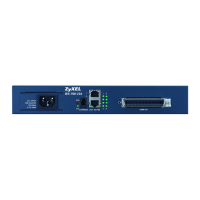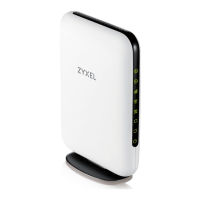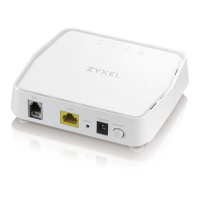Chapter 20 IPS
USG FLEX H Series User’s Guide
308
Backdoor/Trojan Horse A backdoor (also called a trapdoor) is hidden software or a hardware mechanism that
can be triggered to gain access to a program, online service or an entire computer
system. A Trojan horse is a harmful program that is hidden inside apparently harmless
programs or data.
Although a virus, a worm and a Trojan are different types of attacks, they can be
blended into one attack. For example, W32/Blaster and W32/Sasser are blended attacks
that feature a combination of a worm and a Trojan.
BotNet A Botnet is a number of Internet computers that have been set up to forward
transmissions including spam or viruses to other computers on the Internet though their
owners are unaware of it. It is also a collection of Internet-connected programs
communicating with other similar programs in order to perform tasks and participate in
distributed Denial-Of-Service attacks.
Buffer Overflow A buffer overflow occurs when a program or process tries to store more data in a buffer
(temporary data storage area) than it was intended to hold. The excess information can
overflow into adjacent buffers, corrupting or overwriting the valid data held in them.
Intruders could run codes in the overflow buffer region to obtain control of the system,
install a backdoor or use the victim to launch attacks on other devices.
DoS/DDoS The goal of Denial of Service (DoS) attacks is not to steal information, but to disable a
device or network on the Internet.
A Distributed Denial of Service (DDoS) attack is one in which multiple compromised
systems attack a single target, thereby causing denial of service for users of the targeted
system.
Instant Messenger IM (Instant Messenger) refers to chat applications. Chat is real-time, text-based
communication between two or more users via networks-connected computers. After
you enter a chat (or chat room), any room member can type a message that will
appear on the monitors of all the other participants.
Mail A Mail or email bombing attack involves sending several thousand identical messages to
an electronic mailbox in order to overflow it, making it unusable.
Misc Miscellaneous attacks takes advantage of vulnerable computer networks and web
servers by forcing cache servers or web browsers into disclosing user-specific information
that might be sensitive and confidential. The most common type of Misc. attacks are
HTTP Response Smuggling, HTTP Response Splitting and JSON Hijacking.
P2P Peer-to-peer (P2P) is where computing devices link directly to each other and can
directly initiate communication with each other; they do not need an intermediary. A
device can be both the client and the server. In the Zyxel Device, P2P refers to peer-to-
peer applications such as e-Mule, e-Donkey, BitTorrent, iMesh, etc.
Scan A scan describes the action of searching a network for an exposed service. An attack
may then occur once a vulnerability has been found. Scans occur on several network
levels.
A network scan occurs at layer-3. For example, an attacker looks for network devices
such as a router or server running in an IP network.
A scan on a protocol is commonly referred to as a layer-4 scan. For example, once an
attacker has found a live end system, he looks for open ports.
A scan on a service is commonly referred to a layer-7 scan. For example, once an
attacker has found an open port, say port 80 on a server, he determines that it is a HTTP
service run by some web server application. He then uses a web vulnerability scanner (for
example, Nikto) to look for documented vulnerabilities.
Stream Media A Stream Media attack occurs when a malicious network node downloads an
overwhelming amount of media stream data that could potentially exhaust the entire
system. This method allows users to send small requests messages that result in the
streaming of large media objects, providing an opportunity for malicious users to exhaust
resources in the system with little effort expended on their part.
Table 153 Policy Types (continued)
POLICY TYPE DESCRIPTION

